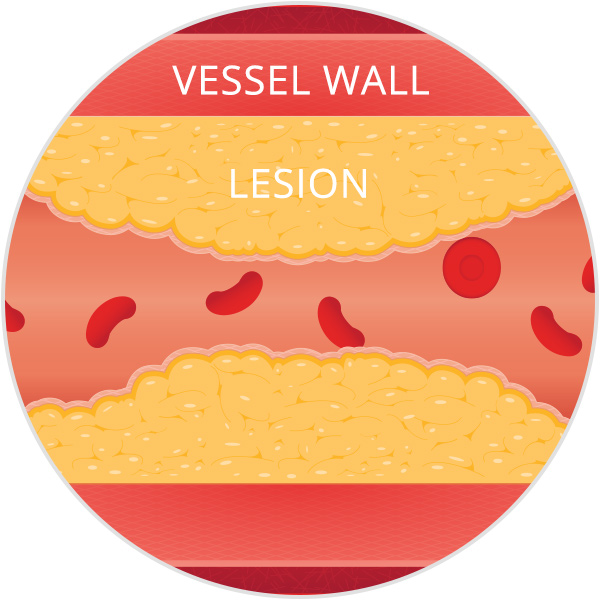What is peripheral artery disease?
Peripheral artery disease (PAD) is the narrowing or blockage of the vessels that carry blood from the heart to the legs. PAD can occur in any blood vessel, but it is more common in the legs than the arms.
HEALTHY BLOOD VESSEL
NORMAL BLOOD FLOW
UNHEALTHY BLOOD VESSEL
LIMITED BLOOD FLOW













